3D cell culture set for space: New technology to grow bone cells on International Space Station
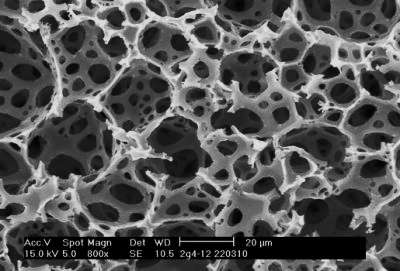
Many people dream of blasting off into space and scientists are no different. But until space tourism becomes an affordable reality, surely the next best thing is to see your work go into orbit.
That's what will happen to Professor Stefan Przyborski from Durham University when cell culture experiments using technology he's developed using funding from BBSRC will journey to the International Space Station (ISS) in late 2014.
The payload will include advanced bioreactors that will grow bone cells in space to research how microgravity (there is a small effect on orbiting spacecraft) affects the ways cells grow and communicate in space. The experiments are funded by a NASA grant, and the National Institute of Arthritis and Musculoskeletal and Skin Diseases of the National Institutes of Health, and are led by Associate Professor Paola Divieti-Pajevic of Massachusetts General Hospital (MGH), which conducts the largest hospital-based research program in the US.
To grow bone cells (osteocytes) established in her laboratory, aboard the orbiting ISS, Divieti-Pajevic has selected a 3D cell culture technology called Alvetex, which was developed by Przyborski and colleagues. The cross-linked polystyrene-like material forms a highly porous scaffold to which cells attach, and was specially chosen by the US team as better performing in ground tests than more than 15 rival cell-growing systems.
Przyborski co-founded the spin-out company Reinnervate in 2002 to commercialise the Alvetex system which now has more than 1500 customers around the world. "This made me further realise the impact of the technology we had developed and how it is being used and applied to help advance the research and discovery process," says Przyborski. "I look forward to seeing how Alvetex performs in the weightless environment of space."
New dimensions
Growing cells – in a laboratory in space or on earth – forms a fundamental basis of modern biology, supporting everything from novel drug design to growing human tissues for use in research and development. As a cell biologist working with conventional cell culture techniques, Przyborski became increasingly frustrated over the years with the common practice of growing cells on flat plastic.
The problem is that cells grown on a 2D Petri dish do not come to resemble the tissues they should – after all, cells in real organisms grow in three dimensions, not two. "There had to be a better way for growing cells," he says. "So I developed Alvetex as a solution to enhance the growth, differentiation and function of cultured cells."
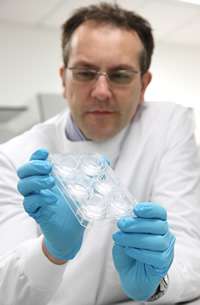
Taking the Latin 'ex conformatione usus' meaning 'from structure comes function' as inspiration to maintain real tissue qualities, Przyborski obtained BBSRC funding and set about developing a system that would prevent cells from spreading out thinly as they do on conventional 2D culture plates.
The answer lay in changing the geometry of a familiar material – polystyrene – and used it to create a porous 3D scaffold compatible for cell culture. "It is a combination of the shape and nature of the material from which Alvetex is made which gives its unique properties," says Przyborski. Specifically, the material is engineered into a 200um membrane, which allows cells to enter the matrix yet remain close enough to the surrounding culture medium to absorb nutrients, just as cells are bathed in interstitial fluid in real human and animal tissues.
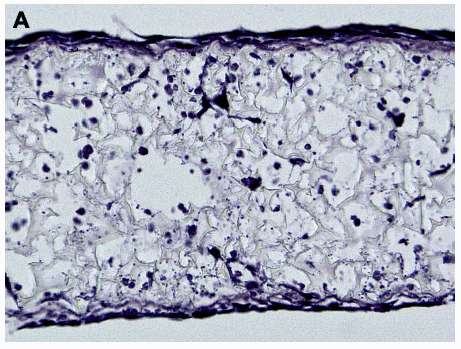
Force field
There has been a proliferation in different 3D cell culture systems in recent years because they better mimic conditions in real organisms and tissues. For a scientist such as Divieti-Pajevic with experiments to run, there is an abundant choice of systems to go for. But this time it matters more than most – it's got to work perfectly, first time: in space, no one can hear you scream (if your cell culture system fails).
"The Alvetex works really well for us," says Divieti-Pajevic. "Honestly, we tried almost every single scaffold there was available but we always ran into trouble. We went to a lab and they were trying to create scaffolds for us, so we tried 15-20 before going with Alvetex."
She says they tried cell scaffolds based on different materials such as collagen, alginate, and calcium phosphate. "With collagen-based scaffolds we had very poor RNA recovery and the quality was really not good. Then with calcium phosphate we had trouble processing samples. Moreover, the scaffolds were too heavy for our applications."
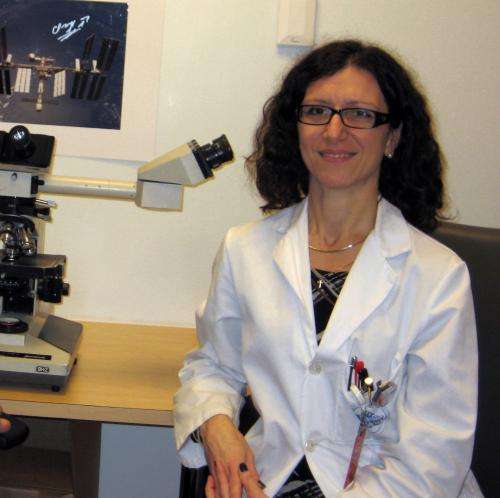
Based at the MGH's Endocrine Unit research centre, Divieti-Pajevic heads up a lab devoted to finding out how osteocytes, the most common form of bone cell, sense and respond to mechanical movements. These important cells play a role in calcium and phosphate regulation in the body – key compounds for healthy living - and play a role in the development of bone-thinning conditions such as osteoporosis, or as occurs during prolonged bed rest. Evidence suggests osteocytes regulate bone growth and development in response to shear or strain forces; this can be measured by looking at patterns of gene expression in osteocytes, and so far her team have pinpointed the SOST gene that produces the protein sclerostin, which in turn affects bone formation.
Her laboratory has since used Przyborski's Alvetex system to grow bone cells, and has obtained excellent results. "With Alvetex one of the nice things is that you can also cut them to size with dermal punches to make them different sizes," says Divieti-Pajevic. "Cells can grow all across the scaffolds, and when we do RNA isolation it's really, really good."
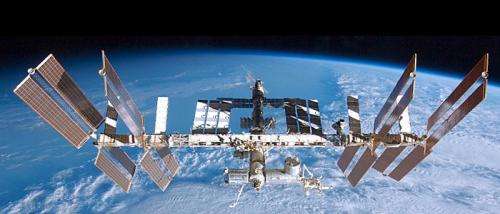
She is looking to compare the results of osteocyte cell cultures in space with those grown here on earth. To simulate microgravity in her lab (see 'Gravity: Studies in Free Fall' on protomag.com), she uses a NASA-developed slow rotating bioreactor (Synthecon) that can mimic some of the effects of microgravity because, using Alvetex, all the elements of the culture sit together. "Alvetex is very thin and fairly light so we can find neutral buoyancy and it works well – cells think they are in microgravity. But if the cell scaffold is too big or too heavy then you have to rotate at higher speeds, which cause unwanted laminar flow of the fluids."
This experience will serve her in good stead for the ISS mission where a payload, eOSTEO, developed by the Canada-based CALM Technologies will be used for the on-board experiments – the first 3D osteocyte cell culture experiments in microgravity. It is a fully automated cell-culture system that houses nine bioreactors, each of which contains five Alvetex scaffolds.
Divieti-Pajevic says the final details of the experimental design are still being finalised as safety and training protocols are refined. Her team will liaise with the astronauts who will be completing the research via video, and she expects the experiments to run for one to three weeks.
Previously, BBSRC-funded researchers have worked with crystals grown in space for structural biology studies; work on seed germination and plant growth has also involved BBSRC scientists. However, this is the first time that a fundamental research technology developed using funding from BBSRC has been used in space.
















